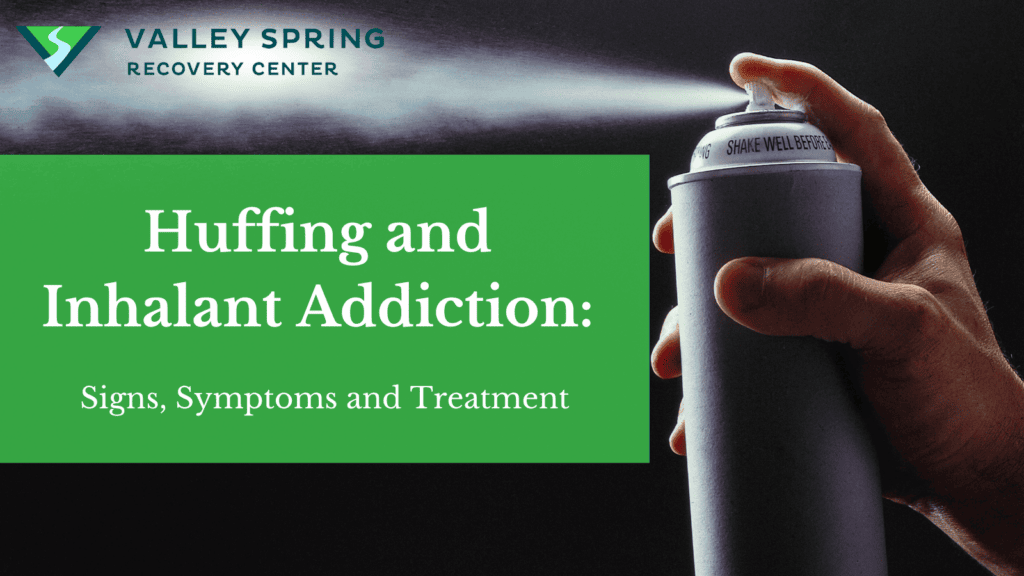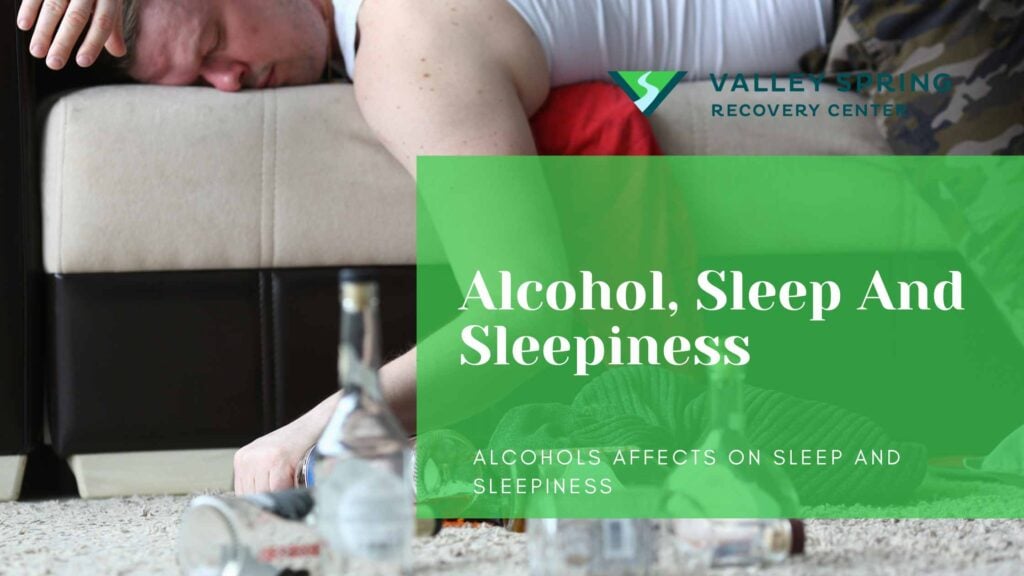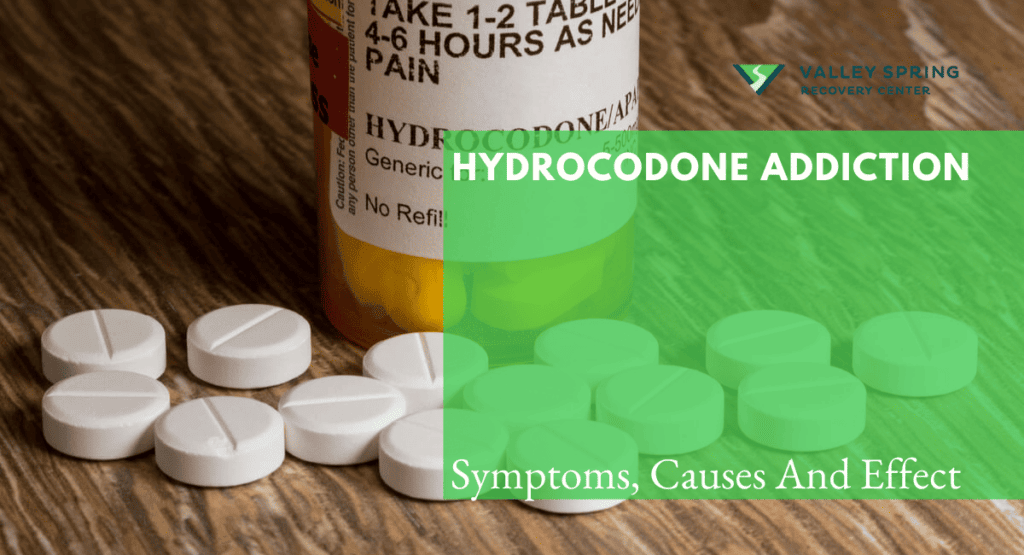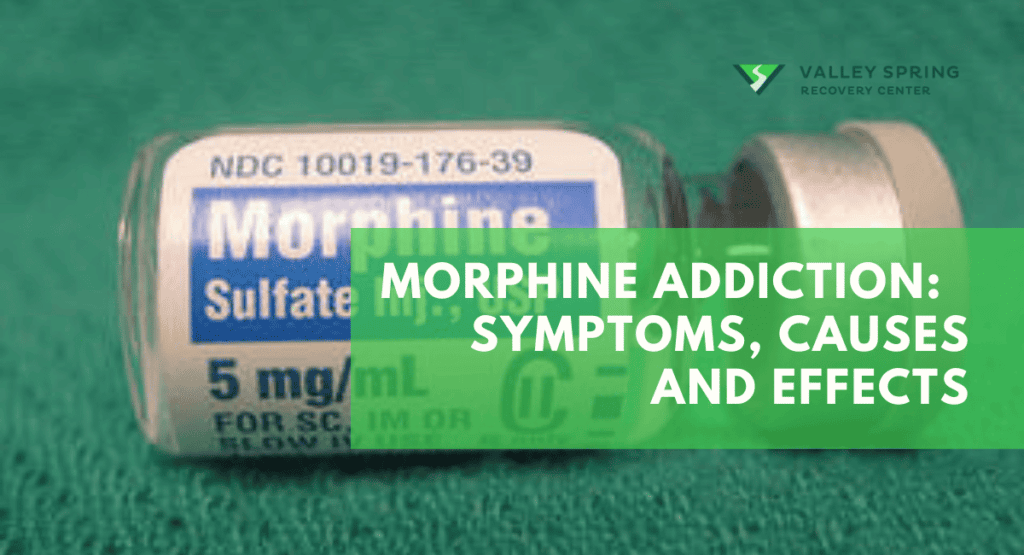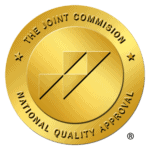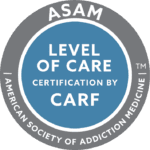Crack is a form of cocaine where cocaine is cooked with baking soda and takes a solid form instead of powdered form where it can then be smoked. Crack is highly addictive and can be described as the compulsive use of crack with an inability to stop using the substance. Understanding the signs, symptoms, and statistics of crack addiction is crucial for individuals who are addicted to the substance as well as their loved ones and treatment professionals.
First and foremost, crack addiction can have devastating consequences on individuals’ physical and mental health, as well as their personal and social lives. Moreover, crack addiction is a significant public health concern, as it contributes to crime rates, strained healthcare systems, and socioeconomic disparities.
What is Crack?
Crack is a powerful and highly addictive form of cocaine. It is derived from the coca plant and processed into a solid form, usually in the shape of small rocks or crystals. It is called “crack” due to the crackling sound it makes when heated for smoking.
Crack is typically smoked using a pipe or other smoking devices, allowing its vapors to be rapidly absorbed into the bloodstream through the lungs.
The production of crack involves mixing cocaine powder with baking soda or another alkaline substance and heating it. This process removes impurities and creates a form of cocaine that is more potent and produces a quicker and more intense high compared to powdered cocaine.
The intense and immediate effects of crack are attributed to its ability to rapidly cross the blood-brain barrier, resulting in a surge of dopamine, a neurotransmitter associated with pleasure and reward.
Due to its highly addictive nature and the rapid onset of euphoria, crack poses a significant risk for dependence and addiction.
The intense cravings and withdrawal symptoms associated with crack addiction can lead individuals to prioritize obtaining and using the drug above all else. This is often at the expense of their health, relationships, and overall well-being.
How is Crack Cocaine Different from Powdered Cocaine?
Crack cocaine is a form of cocaine that has been processed to create a rock crystal. Unlike powdered cocaine, which is typically snorted, crack is usually smoked, leading to an intense and immediate high. The effects of crack are generally shorter-lived but more intense compared to powdered cocaine.
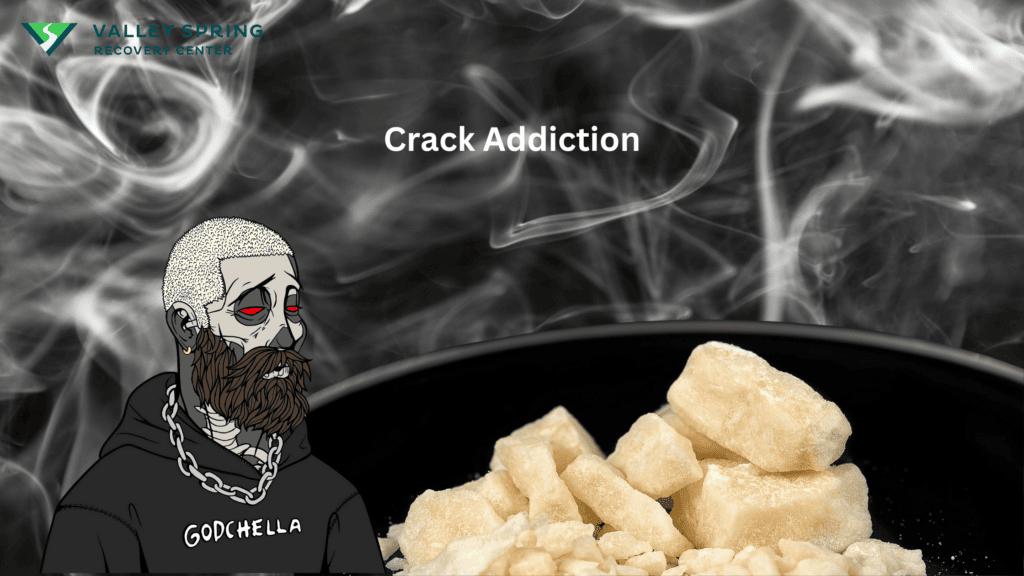
Why is crack so addictive?
Crack cocaine is highly addictive due to its intense, short-lived effects and the rapid cycle of euphoria and withdrawal it induces. The drug acts on the brain’s reward system, releasing a large amount of dopamine, a neurotransmitter associated with pleasure and reward forcing the addict to continue using crack despite the negative consequences.
Crack creates an intense feeling of euphoria that lasts for only a short period, typically 5 to 10 minutes. The rapid onset and short duration of the high often lead to a cycle of repeated use in an attempt to sustain pleasurable feelings, thereby increasing the risk of addiction. Additionally, the abrupt drop in dopamine levels after the high subsides can lead to withdrawal symptoms like depression and anxiety, further compelling the individual to seek out the drug. The highly reinforcing nature of these rapid cycles makes crack cocaine one of the most addictive substances.
A crack cocaine addict will continue using the drug even though there are obvious harmful effects. Crack addiction often involves physical and mental dependence. Becoming dependent on the substance means that a person may experience symptoms of withdrawal when cutting back on crack cocaine use.
Is Crack More Addictive Than Other Forms of Cocaine?
Yes, crack is generally considered to be more addictive than other forms of cocaine. The intense, immediate high and the subsequent crash create a cycle that encourages frequent use, leading to a higher potential for addiction.
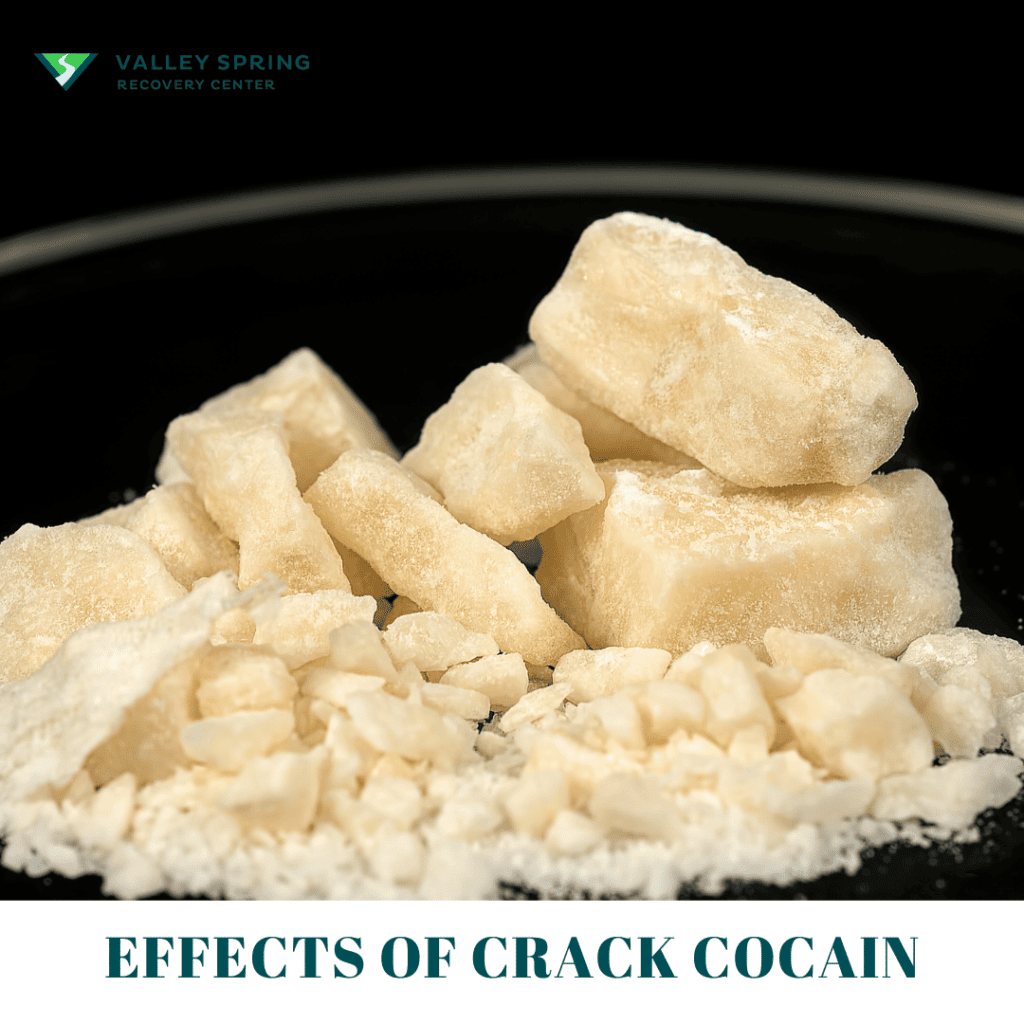
What Are The Effects Of Smoking Crack?
Dependency is the state of reliance on a substance or behavior, characterized by withdrawal symptoms and a strong compulsion to continue despite negative outcomes.
Short-Term Effects of Crack Dependency:
- – Intense euphoria and increased energy
- – Heightened alertness and focus
- – Decreased appetite
- – Increased heart rate and blood pressure
- – Constricted blood vessels
- – Dilated pupils
- – Increased body temperature
- – Insomnia
- – Restlessness and irritability
- – Agitation and anxiety
What Are the Long-Term Health Risks of Crack Use?
Long-term use of crack cocaine can lead to severe health issues, including respiratory problems, heart disease, stroke, and neurological damage. It can also lead to severe dental issues, commonly referred to as “crack mouth.” The remaining long term health risks of using crack cocaine are listed below:
- – Severe addiction and dependence
- – Cardiovascular problems, such as heart attacks and strokes
- – Respiratory issues, including lung damage and pneumonia
- – Neurological complications, such as seizures and cognitive impairment
- – Mood disorders, including depression and anxiety
- – Increased risk of infectious diseases (e.g., HIV/AIDS, hepatitis)
- – Damage to the liver, kidneys, and other organs
- – Financial and social consequences, such as job loss and strained relationships
- – Legal issues and involvement in criminal activities
- – Increased risk of overdose, which can be fatal
How Does Crack Affect Mental Health?
Crack use can have severe mental health implications, including increased risk for anxiety, depression, and psychotic symptoms like hallucinations or paranoia. Long-term use can exacerbate these issues and make them more challenging to treat.
What Are the Immediate Physical Effects of Using Crack?
The immediate physical effects of using crack can include increased heart rate, elevated blood pressure, and hyperstimulation. Users may also experience dilated pupils, increased body temperature, and intense euphoria. However, these effects are often followed by a severe “crash” that can include depression and fatigue.
How Does Crack Addiction Affect Families?
Crack addiction can have a devastating impact on families, leading to broken relationships, financial strain, and emotional trauma. Family therapy is often recommended as part of a comprehensive treatment plan to address these issues.
What Is The Historical Significance of Crack Cocaine?
Crack emerged as a significant drug epidemic in the United States during the 1980s. The term “crack” refers to the crackling sound produced when the drug is heated and smoked.
During this period, cocaine use was already prevalent, particularly among affluent individuals. However, the introduction of crack cocaine brought about a dramatic shift in the drug landscape. Crack was relatively inexpensive to produce and purchase, making it more accessible to a broader range of individuals, including those in lower socioeconomic communities.
Crack gained particular notoriety for its highly addictive properties and potent effects. Smoking crack delivers a rapid and intense high, often described as an intense rush of euphoria that lasts for a brief period. This intense and immediate effect contributed to the rapid spread of crack addiction.
The crack epidemic had a profound impact on various aspects of society. It was associated with increased rates of crime, violence, and social disintegration in affected communities. The widespread use and addiction to crack also placed a significant strain on healthcare systems and social services.
The crack epidemic prompted a heightened focus on drug related crime, leading to the implementation of stricter drug laws and harsher penalties for crack-related offenses. These policies disproportionately affected marginalized communities, contributing to racial and socioeconomic disparities in the criminal justice system.
Over time, crack use and addiction rates have fluctuated, and efforts have been made to address the underlying issues associated with crack addiction through prevention, treatment, and harm reduction strategies. However, the historical impact of the crack epidemic continues to shape discussions around drug policy, public health, and social justice.
Methods of consumption have included:
- Smoking: Crack cocaine is typically smoked using a pipe or other smoking devices. The drug is heated, producing vapors that are inhaled into the lungs, rapidly delivering the drug to the bloodstream.
- Freebasing: Some individuals may also freebase crack cocaine, which involves converting it into a vaporizable form by mixing it with a volatile substance, such as ether or ammonia. The resulting mixture is heated and the vapors are inhaled.
- Chasing the Dragon: This method involves heating crack cocaine on a piece of foil and inhaling the vapors through a tube or straw. The user moves the flame under the foil to vaporize the drug, chasing the trail of smoke as it forms.
- Intravenous Injection: Although less common, some individuals may dissolve crack cocaine in water and inject it directly into their veins for a more immediate and intense effect. This method poses additional risks associated with injecting drugs.
- Snorting: While less common than other methods, some individuals may crush crack cocaine into a powder and snort it, allowing the drug to be absorbed through the nasal mucosa. However, crack is typically less suited for snorting compared to powdered cocaine due to its composition.
It is important to note that crack cocaine is highly addictive and poses significant health risks regardless of the method of consumption.
What Is The Science Behind Crack Addiction?
The science behind crack addiction involves studying the brain’s neurochemical changes due to repeated crack cocaine use, leading to tolerance, dependence, and compulsive drug-seeking behavior.
Crack cocaine affects the brain by rapidly increasing dopamine levels, a neurotransmitter associated with pleasure and reward, leading to intense euphoria.
This flood of dopamine disrupts normal communication between brain cells and can result in long-term changes to the brain’s reward system, leading to addiction and other cognitive and behavioral effects.
What Are The Signs of Crack Addiction?
Below are signs and symptoms that can aid in recognizing Crack addiction for early intervention and effective treatment.
Physical Signs
- – Dilated pupils
- – Bloodshot or red eyes
- – Sudden weight loss
- – Changes in appetite
- – Frequent nosebleeds (if snorting)
- – Track marks or puncture wounds (if injecting)
- – Burn marks on fingertips or lips (from smoking)
- – Poor hygiene and neglect of physical appearance
- – Tremors or shakes
- – Slurred speech
- – Unsteady gait or coordination difficulties
Behavioral Signs
- – Drastic changes in sleep patterns, such as insomnia or hypersomnia
- – Neglecting responsibilities at work, school, or home
- – Withdrawal from social activities and isolating oneself
- – Engaging in secretive or suspicious behavior
- – Financial difficulties or unexplained money problems
- – Lying or being dishonest about drug use
- – Engaging in risky or criminal behaviors to obtain crack cocaine
- – Relationship problems and conflicts with family and friends
- – Loss of interest in previously enjoyed hobbies or activities
- – Mood swings, irritability, and aggression
Emotional Signs
- – Intense cravings for crack cocaine
- – Feelings of restlessness and agitation
- – Increased anxiety and paranoia
- – Mood swings and irritability
- – Depression and feelings of hopelessness
- – Emotional instability and difficulty regulating emotions
- – Heightened sensitivity to stress and triggers
- – Social withdrawal and isolation
- – Impaired judgment and decision-making
- – Lack of motivation and apathy towards previously important aspects of life
What Are The Symptoms of Crack Addiction?
The symptoms of crack addiction encompass a range of physical, behavioral, emotional, and social indicators that reflect the compulsive use of crack cocaine and the negative impact it has on an individual’s life.
Early Symptoms
- – Increased energy and alertness
- – Elevated mood and euphoria
- – Decreased appetite
- – Dilated pupils
- – Heightened confidence and sociability
- – Restlessness and irritability
- – Increased talkativeness
- – Intense cravings for crack cocaine
- – Risk-taking behaviors and impulsivity
- – Neglect of responsibilities and obligations
Advanced Symptoms
- – Severe weight loss and malnutrition
- – Chronic insomnia or disrupted sleep patterns
- – Paranoia and hallucinations
- – Aggressive and violent behavior
- – Financial problems and desperate efforts to obtain crack cocaine
- – Social isolation and strained relationships
- – Decline in personal hygiene and appearance
- – Poor decision-making and impaired judgment
- – Loss of interest in activities once enjoyed
- – Health complications, such as heart problems and respiratory issues
What Are The Withdrawal Challenges For Crack Cocaine?
Crack addiction withdrawal presents significant challenges, including intense drug cravings, fatigue, depression, anxiety, restlessness, sleep disturbances, increased appetite, cognitive difficulties, and physical discomfort.
Seeking professional help and support through medically supervised detoxification and addiction treatment programs is crucial for managing withdrawal symptoms and initiating the recovery process.
What are the Crack Addiction statistics?
The prevalence of crack addiction remains a significant concern, with individuals from diverse backgrounds being affected by this highly addictive form of substance abuse.
Global statistics
- Prevalence: Crack cocaine addiction is a significant concern in many countries, particularly in North and South America. It has been a major issue in the United States, Canada, and some South American nations.
- Health Impacts: Crack cocaine is a highly addictive substance, and its use can lead to severe physical and mental health problems, including heart issues, respiratory problems, and psychological disorders.
- Treatment: Treatment options for crack addiction include therapy, counseling, and support groups. However, the success of treatment can vary widely among individuals.
- Legal Status: The possession and use of crack cocaine are illegal in many countries, leading to legal consequences for those caught with the drug.
National Statistics
- Prevalence: In the United States, crack cocaine has been a significant drug issue, particularly during the 1980s and 1990s.
- Cocaine-related Admissions: According to the Substance Abuse and Mental Health Services Administration (SAMHSA), in 2019, there were approximately 68,000 admissions to substance abuse treatment facilities in the U.S. specifically for cocaine-related issues, which may include crack addiction.
- Emergency Department Visits: The Drug Abuse Warning Network (DAWN) reported that in 2011, there were around 505,224 emergency department visits in the U.S. related to cocaine use, including crack cocaine.
- Arrests and Incarceration: In the past, crack cocaine offenses led to a significant number of arrests and incarcerations in the United States. The enforcement of strict drug laws, including mandatory minimum sentences, has disproportionately affected minority communities.
- Demographic Factors: Historically, crack addiction has affected individuals from various socioeconomic backgrounds, but it has been particularly prevalent in lower-income urban areas.
- Health Risks: Crack addiction poses numerous health risks, including cardiovascular problems, respiratory issues, neurological complications, and mental health disorders.
Relapse Rates
Relapse rates for crack addiction can vary depending on various factors, including individual circumstances, treatment approaches, and support systems. Here is some general information on relapse rates:
- Short-term relapse rates: In the early stages of recovery from crack addiction, short-term relapse rates can be relatively high. Estimates suggest that around 40% to 60% of individuals may experience a relapse within the first year after treatment. Crack addiction can be particularly challenging to overcome due to the intense cravings and psychological dependence associated with the drug.
- Long-term relapse rates: Sustaining long-term recovery from crack addiction can be difficult, and relapse rates remain a concern. Studies indicate that over a longer period, such as multiple years after treatment, relapse rates for crack addiction can range from 60% to 80% or higher. It highlights the chronic nature of addiction and the need for ongoing support and relapse prevention strategies.
Mortality Rates
Crack addiction can have severe consequences, including the risk of overdose and mortality. However, it is important to note that mortality rates can vary depending on numerous factors.
- Crack overdose statistics related to mortality: Crack cocaine use can lead to overdose, which can be fatal. Overdose deaths involving crack cocaine are typically associated with a combination of factors, including the dose, purity of the drug, individual tolerance, route of administration, and the presence of other substances in the person’s system. However, it’s important to highlight that overdose statistics can fluctuate over time and across different regions.
- Contributing factors: As mentioned earlier, several factors can contribute to the mortality rates associated with crack addiction. These include the potential for cardiovascular complications (such as heart attacks and strokes), respiratory issues, the risk of infectious diseases (such as HIV/AIDS and hepatitis), violence related to drug use, and co-occurring substance use disorders or mental health conditions. Additionally, socioeconomic factors, limited access to healthcare, and the stigma associated with addiction can also impact mortality rates.
What Treatment Options Are Available?
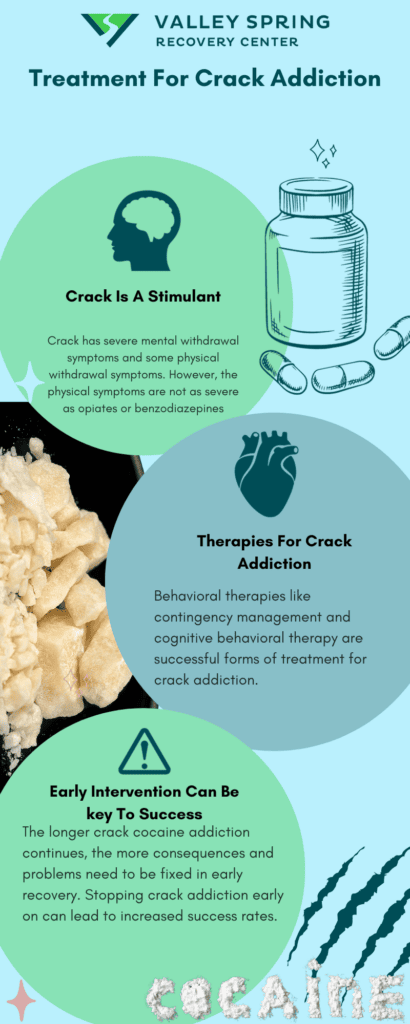
Treatment options for crack addiction include behavioral therapies, counseling, support groups, medication-assisted treatment, and comprehensive addiction programs. All these can be achieved under inpatient or outpatient care and supervision.
Inpatient Treatment
Inpatient treatment for crack addiction involves individuals residing in a specialized facility where they receive intensive, round-the-clock care and support to overcome their addiction.
It typically includes a combination of medical detoxification, individual and group therapy, behavioral interventions, relapse prevention strategies, and holistic approaches to address the physical, psychological, and social aspects of addiction.
- Success rates for inpatient treatment can vary depending on various factors, such as the individual’s commitment to recovery, the quality of the treatment program, the presence of co-occurring disorders, and post-treatment support.
- While specific success rates may differ, inpatient treatment has shown promising outcomes in terms of providing a structured and supportive environment for individuals to achieve initial recovery milestones and lay the foundation for long-term sobriety.
Outpatient Treatment
Outpatient treatment for crack addiction is a form of addiction treatment where individuals receive therapy and support while living at home and attending scheduled treatment sessions at a clinic or treatment facility.
It involves individual counseling, group therapy, educational programs, and may include medication-assisted treatment. Outpatient treatment allows individuals to maintain their daily routines and responsibilities while receiving support for their addiction.
- Success rates for outpatient treatment can vary depending on factors such as the severity of addiction, individual motivation, the level of support available, and the effectiveness of the treatment program. While success rates may vary, outpatient treatment has shown positive outcomes in helping individuals achieve and sustain recovery from crack addiction, particularly when combined with strong social support and engagement in the treatment process.
Are There Support Groups for Crack Addiction?
Yes, there are various support groups and community resources available for individuals struggling with crack addiction. These can include 12-step programs like Cocaine Anonymous (CA) and other peer support options.
What Is The Importance of Support Systems?
Support systems play a crucial role in the recovery journey of individuals with crack addiction, providing essential emotional, social, and practical support.
Having a strong support system can offer encouragement, understanding, and accountability, helping individuals navigate the challenges of addiction, stay motivated, and make positive changes.
Support systems can include family, friends, support groups, therapists, and addiction professionals who provide guidance, empathy, and resources.
They can help individuals develop healthy coping mechanisms, provide a safe and non-judgmental space for sharing experiences, and offer assistance in accessing treatment and aftercare services.
The importance of support systems lies in their ability to foster a sense of belonging, reduce feelings of isolation, and provide the necessary encouragement and structure for sustained recovery from crack addiction.
Can Crack Addiction Lead to Legal Issues?
Yes, possession or distribution of crack cocaine is illegal in many jurisdictions and can lead to significant legal consequences, including imprisonment. The legal ramifications of drug-related crimes can further complicate the individual’s ability to seek treatment and recover.
Where To Get Help For Crack Addiction?
Treatment for crack addiction often involves behavioral therapies, counseling, and sometimes medication to manage withdrawal symptoms which can occur in an Inpatient rehab facility or outpatient program depending on the severity of the addiction. Valley Spring Recovery Center offers drug and alcohol rehab in New Jersey which addresses and effectively treats crack addiction.
Crack addiction is a serious and complex issue with significant physical, psychological, and social consequences. It can lead to severe health problems, strained relationships, financial difficulties, and legal issues.
Overcoming crack addiction requires a comprehensive approach that addresses the physical, emotional, and social aspects of addiction.
Seeking professional help, engaging in evidence-based treatments, and building a strong support system are key steps towards recovery.
It is important to remember that recovery is possible, and with the right support and dedication, individuals can overcome crack addiction and lead fulfilling, drug-free lives.
Kristy Ashe
All author postsShare This Post

